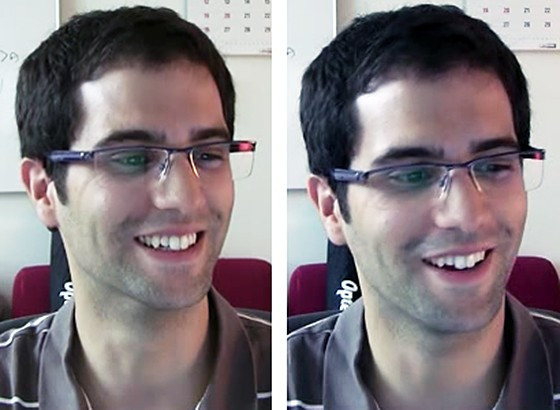A Program That Can Spot Real and Fake Smiles [VIDEO]

Scientists from the Massachusetts Institute of Technology (MIT) have developed a computer system that can detect and differentiate between smiles of joy and smiles of frustration.
To see if the computer could detect happy smiles and fake miles, scientists conducted an experiment on people at the MIT Media Lab. The participants were first asked to act out expressions of delight or frustration, as webcams recorded their expressions. Then, they were either asked to fill out an online form designed to cause frustration or invited to watch a video designed to elicit a delighted response - also while being recorded.
When asked to feign frustration, scientists say, 90 percent of subjects did not smile. But when presented with a task that caused genuine frustration - filling out a detailed online form, only to then find the information deleted after pressing the "submit" button - 90 percent of them did smile.
Still images showed little difference between these frustrated smiles and the delighted smiles elicited by a video of a cute baby, but video analysis showed that the progression of the two kinds of smiles was quite different: Often, the happy smiles built up gradually, while frustrated smiles appeared quickly but faded fast.
Usually when psychiatrists are conducting a study or an experiment, they rely on acted expressions of emotion, which may provide misleading results. People or participants could give fake or wrong expressions depending on the environment. For eg: even though you do not like someone you sometimes flash a fake smile at that person.
Scientists believe that technology might probably help in detecting real and fake expressions. They reckon the latest technology could pave the way for computers that better assess the emotional states of their users and respond accordingly.
"This work breaks new ground with its focus on frustration, a fundamental human experience. While pain researchers have identified smiling in the context of expressions of pain, the MIT group may be the first to implicate smiles in expressions of negative emotion," said Jeffrey Cohn, a professor of psychology at the University of Pittsburgh, who was not involved in this research, in a statement.
"This is very exciting work in computational behavioral science that integrates psychology, computer vision, speech processing and machine learning to generate new knowledge ... with clinical implications." He says this "is an important reminder that not all smiles are positive. There has been a tendency to 'read' enjoyment whenever smiles are found. For human-computer interaction, among other fields and applications, a more nuanced view is needed," Cohn said.
The study claims that the new technology could probably help marketers understand customers' reaction or expression.
"Just because a customer is smiling, that doesn't necessarily mean the or she is satisfied," Hoque said.
And knowing the difference could be important in gauging how best to respond to the customer
"The underlying meaning behind the smile is crucial," Hoque said.
The analysis could also be useful in creating computers that respond in ways appropriate to the moods of their users. One goal of the research of Affective Computing Group is to "make a computer that's more intelligent and respectful".
Watch the video:
© Copyright IBTimes 2025. All rights reserved.





















